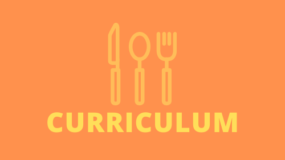Garden Preparation and Transition: As the weather starts to warm up, it is a great time to clean up gardens. Cleaning up weeds to transition from fall and winter crops to spring crops and clearing the area where you will plant is a good place to start. It is also a great time to make a plan for harvesting the previous season’s produce and planting the new spring produce.
Harvesting Previous Crops – Leafy Greens
When transforming your garden during a season change, it is important to harvest out-of-season crops to prevent food waste. Leafy greens are a common crop planted during the cool seasons. If you have some leafy greens remaining in the garden, cut the outer leaves with shears, scissors, or a knife to harvest. If the season has not completely ended, leave the inner leaves to let the plant continue growing. Try harvesting them earlier or later in the day to avoid the midday heat. Store them in a plastic bag or container for up to a week in the refrigerator. Any unwanted plant parts can be placed in a compost pile.
Seed Harvesting
As you prepare for the new crops, seeds may be harvested from the previous ones. To harvest, put a paper bag over each flower head and tie it loosely. Matured seeds will fall into the bag. To store them, shake the seeds in a strainer to remove any debris, lay them to dry then place in small, labeled envelopes.
Soil Preparation and Planting
Dig the soil at least eight inches deep to allow the vegetable roots space to stretch through the loose soil. It is best to plant in rows to allow water to drain away from plant roots, provide furrows for irrigation, and air to enter the soil. Depending on the soil type and vegetable, you can add compost to the ground to improve the soil. Choose the area of the garden to be used and the type of vegetables that will be planted to help determine how much space should be left between seeds or transplants. Decide how much time will be dedicated to the garden to avoid overplanting and reduce time wasted and consider the number of people that will eat the food from the garden to prevent food waste.
Get into the spring season and transition your garden with ease through mindful planning and preparation!
Written by: Cynthia Covarrubias, BLT Extension Agent – Zapata/Webb County
Source: Aggie Horticulture, https://aggie-horticulture.tamu.edu/
Spinach Salad
Recipe by Lorena Iverson, BLT Regional Project Specialist – West Region
SERVES 8
CUSTOMIZE IT! For more salad base options, replace spinach with other leafy green vegetables such as arugula, Swiss chard, or loose-leaf or romaine lettuce. Raspberries and blueberries make great additions or substitutions for strawberries.
Ingredients:
SALAD:
- 7 cups baby spinach (washed, dried, and stems removed)
- 4 cups strawberries, sliced
- ¼ cup toasted almonds, sliced
DRESSING:
- ¼ cup oil
- 3 tablespoons balsamic vinegar (or any vinegar)
Directions:
- Combine spinach, strawberries, and sliced almonds.
- For the dressing, whisk together oil and vinegar.
- Pour dressing over salad and mix until evenly coated.
- Add “Customize It!” options and additions and enjoy.
Estimated Total Cost: $12.57; Cost per serving: $1.57
Nutrients Per Serving: 120 calories, 8 g total fat, 1.5 g saturated fat, 5 mg cholesterol, 290 mg sodium, 12 g carbohydrates, 4 g fiber, 6 g total sugar, 0 g added sugar, and 3 g protein





